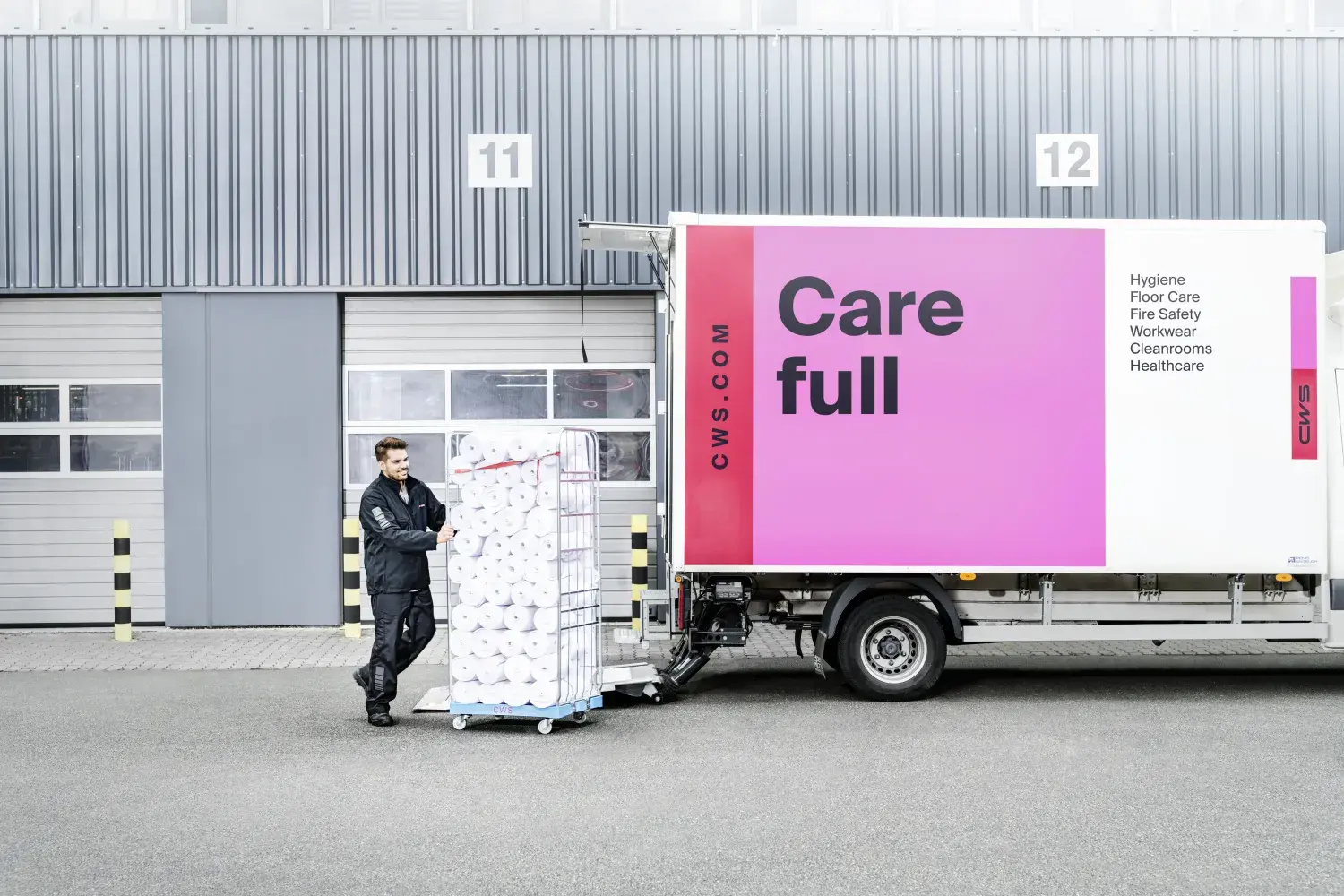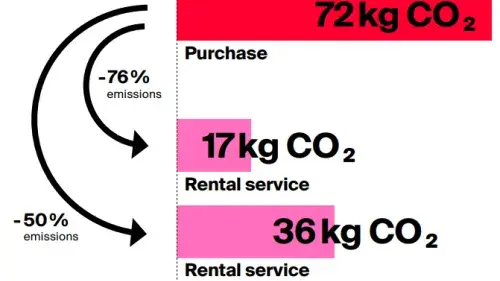How can we prove climate protection? Sustainability Manager Tobias Steffen looked at the figures and developed a suitable calculation model together with colleagues. His results are more than remarkable.
“Now we’ve got it in figures, too,” said Tobias Steffen gesturing enthusiastically at the Excel table teeming with numbers on his computer screen. Tobias Steffen is our Sustainability Manager at CWS and, as such, he has every reason to be in a good mood at the moment. After all, his evaluations prove something that was previously only a plausible suspicion: the fact that the circular supply of rental workwear – a core element of CWS’ sustainability strategy for many years now – avoids considerably more greenhouse gas emissions than previously thought.
CWS' service model can save up to 76 per cent CO2 emissions per year
Tobias can demonstrate that by repairing and using second-hand rental clothing, CWS saves an astonishing 76 per cent of CO2 emissions per year on average for each functional unit. “Normally, around 72 kilograms of carbon dioxide are generated for every worker that we supply with workwear in Germany for one year,” he explained. “By offering our workwear on a rental basis, repairing worn or broken items or replacing them with second-hand garments, we reduce this climate impact to just 17 kilograms. Even if you factor in transport using CWS vehicles, the CO2 emissions per year and employee are still halved from 72 to 36 kilograms. That’s quite remarkable.”
About the study
Tobias Steffen, working in close collaboration with a handful of CWS experts and a consulting firm, already set out to develop a kind of internal climate calculator under the title “Circular Advantage Study”. The calculator makes it possible to compare the climate impact of different ways of handling workwear with great precision. For the study, the Circular Advantage team contrasted two concrete scenarios: a linear and a circular one. In the linear model, wearers take care of their own clothes, washing them at home, performing minor repairs and replacing worn-out items with new ones. In the circular model, they are supplied with their workwear via CWS’ rental service.
“According to a ‘Gesellschaft für Konsumforschung’ study, 63 percent of wearers in Germany take care of their workwear themselves. As such, this case is actually the rule and not the exception.” To obtain results that are as meaningful as possible, Tobias Steffen and his team defined a number of framework parameters. “We looked at the quantity of workwear a worker uses over the course of a year. We then calculated the whole thing for four clothing collections from different areas of use,” he explained. “When doing so, we focused on the two aspects where the greatest potential savings were to be expected: the reuse of used goods and the repair of damaged garments.”
“The longer I use clothes, the less frequently I have to make new ones.”
The Circular Advantage Study primarily employed average values for wear, repair and reuse as the data basis for its calculations. To this end, data were evaluated for all four collections based on a total of 500,000 wash cycles in 2019. “We went through all the usual repairs with our experts,” explained Jan Ulrich, who, as Head of Operational Excellence, played a key role in obtaining the data. “During the process, we arrived at the conclusion that around 90 percent of our repairs could also be performed by the workers themselves. However, we know from market analyses that only around 50 percent actually repair their workwear or have it repaired. And with the general public, the rule is unfortunately: what doesn’t get repaired ends up in the bin.”
The study takes a similar approach when it comes to reuse: for a realistic picture, it used the averaged replacement rate for the last four years, calculated from millions of reused garments. “Via our Customer Fulfillment Centers, we replace about 26 percent of the damaged or worn items with used goods. These are all garments that a private individual would simply throw away and purchase again,” said Tobias Steffen.
“That gives us a very clear idea of how many kilograms of clothing don’t need to be produced at all thanks to our service. We back up these numbers with scientifically based emission values from the production department, allowing us to convert all the figures into CO2.”
>>> Read the full article in our CWS Sustainability Report

